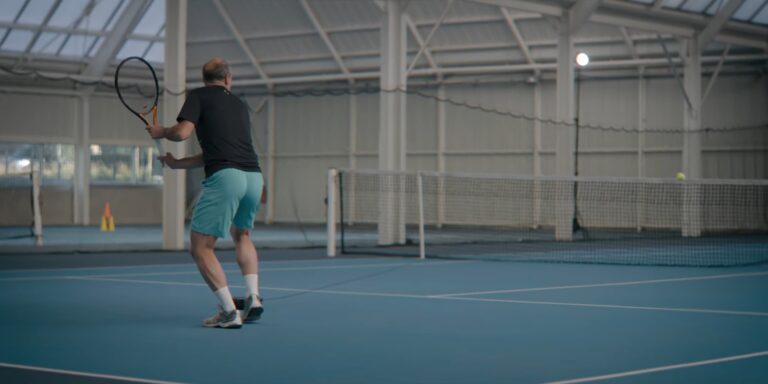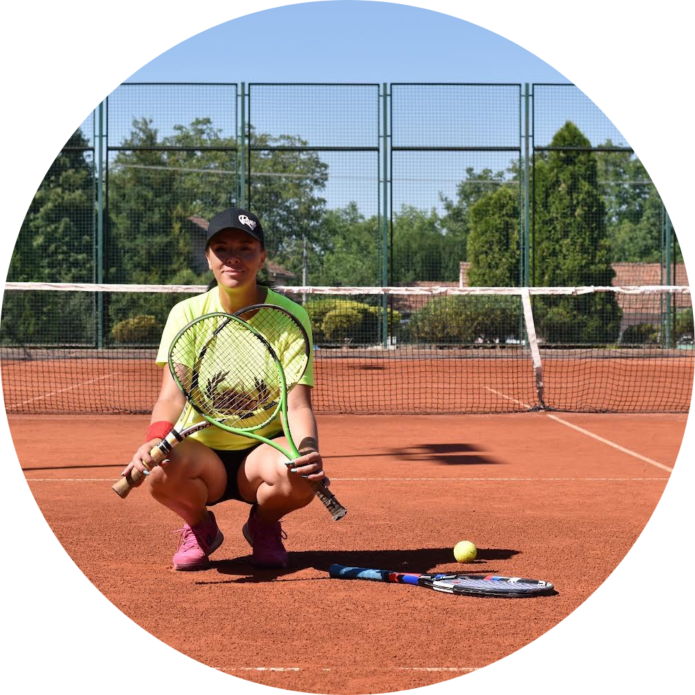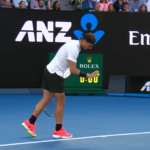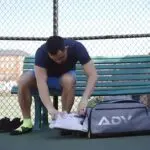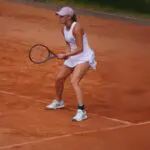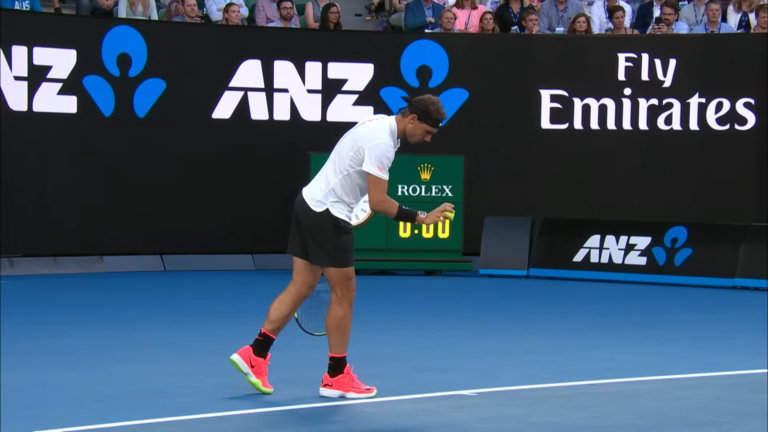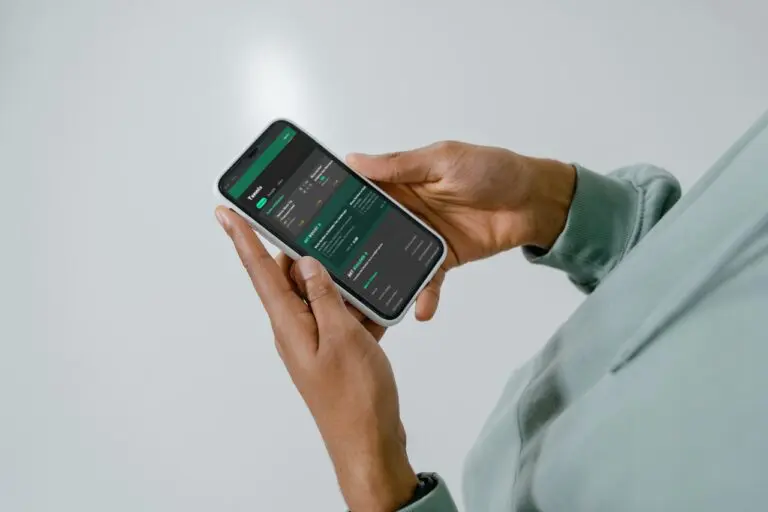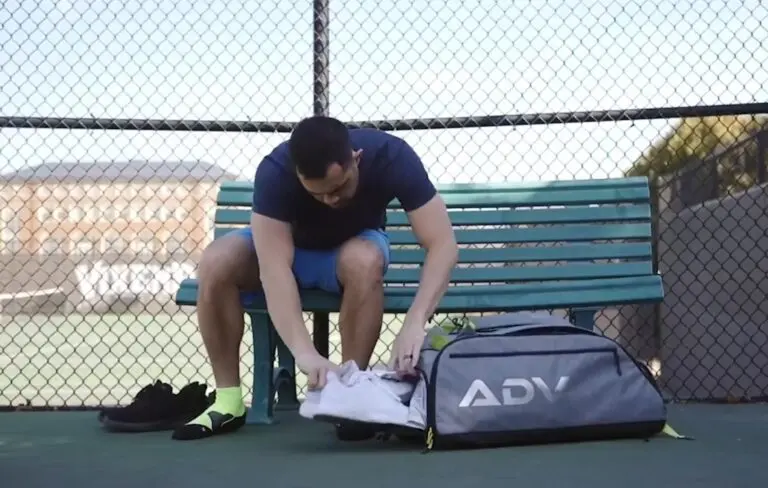Solo tennis practice is not just about hitting a ball against a wall. It’s an opportunity to focus on personal growth, fine-tune your strokes, and build endurance. During my coaching sessions, I often provide helpful tips that will help players to work on their skills even when they are alone on the court.
This guide will walk you through targeted exercises and drills designed to maximize your solo court time.
How To Practice Tennis Alone In 5 Simple Steps
1. Practice through a Ball Machine
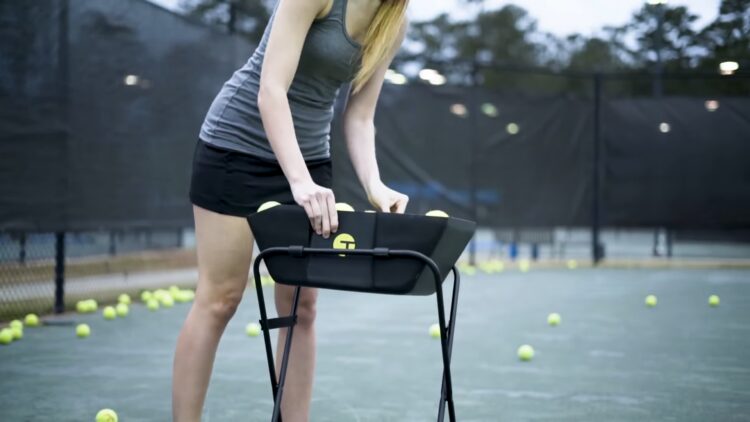
When you’re on the court with a ball machine, it’s just you and the rhythm of the game. I set the pace to challenge my players, pushing them to refine their strokes. With each ball that comes your way, there’s an opportunity to work on technique, from the fluidity of your swing to the precision of your contact point. It’s a relentless, consistent practice partner that tests your endurance and sharpens your focus.
- Adjust the machine to simulate different types of shots.
- Use the repetition to focus on one specific stroke until it feels natural.
2. Practice by hitting against a Wall or Backboard
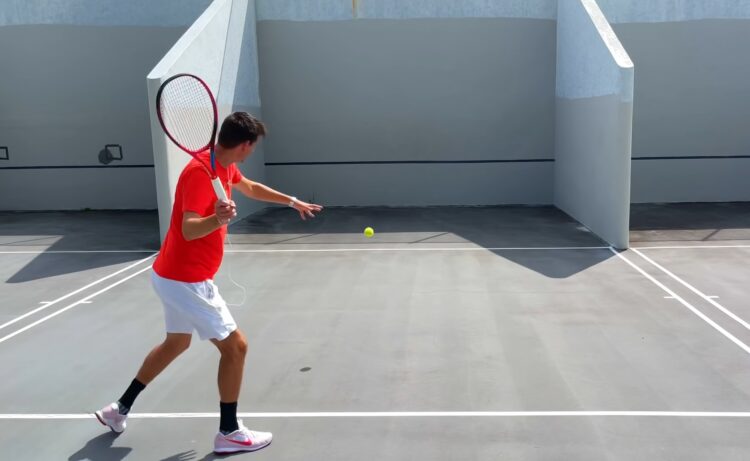
The wall is an excellent tool for developing a sense of timing and improving stroke mechanics. The ball returns quickly, demanding swift footwork and rapid preparation for the next shot. I often have players count their consecutive hits to build a target and challenge themselves to surpass it with each session. It’s a simple, effective way to practice that requires nothing more than a ball, a racket, and your determination.
- Aim for a specific spot on the wall to improve accuracy.
- Increase the power of your shots gradually to build strength.
3. Practice Your Own Tennis
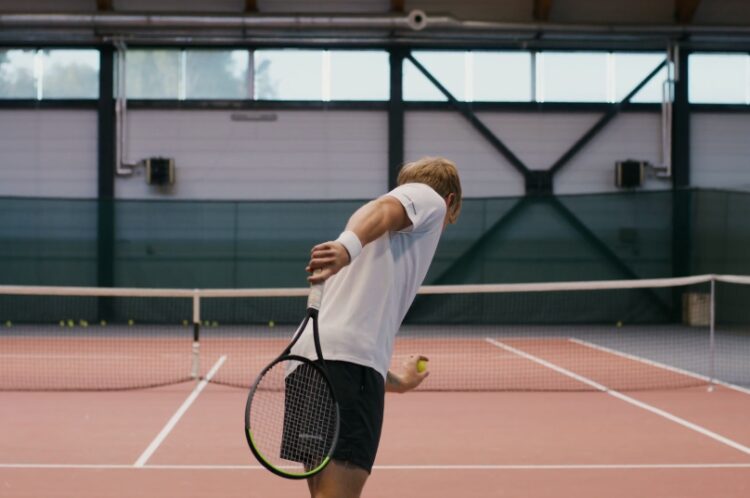
Personal practice is about introspection and honing your individual style. I focus on identifying the unique elements of my players’ games and developing them. This could mean working on a signature shot or turning a weakness into a strength. Solo practice is the time to be self-critical, to analyze and adjust, ensuring that every element of your game is under your control.
- Set personal goals for each practice session.
- Reflect on your performance and note areas for improvement.
4. Self Feed Balls
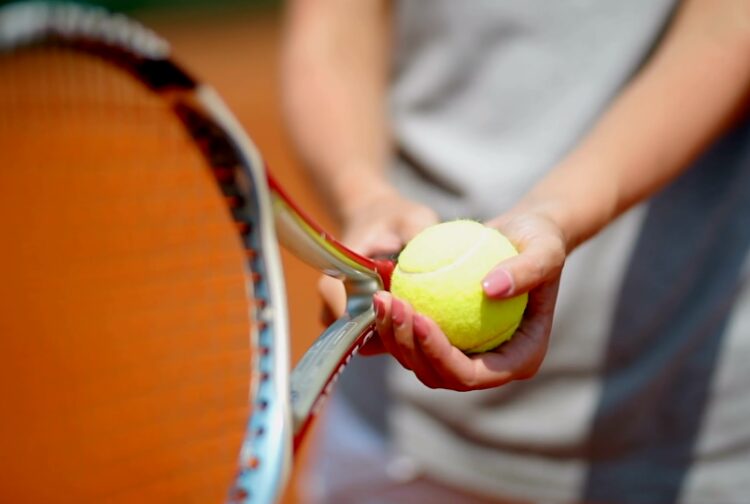
Self-feeding balls is a drill I find particularly useful for working on the initial steps and swing preparation. It’s about creating a realistic scenario where you’re in control of the ball’s placement and pace. This drill allows players to practice the split-step and the first move towards the ball, crucial components of a well-executed stroke.
- Practice different strokes by feeding the ball to various court areas.
- Focus on the transition from the ready position to the point of contact.
5. Practice Your Footwork Skill
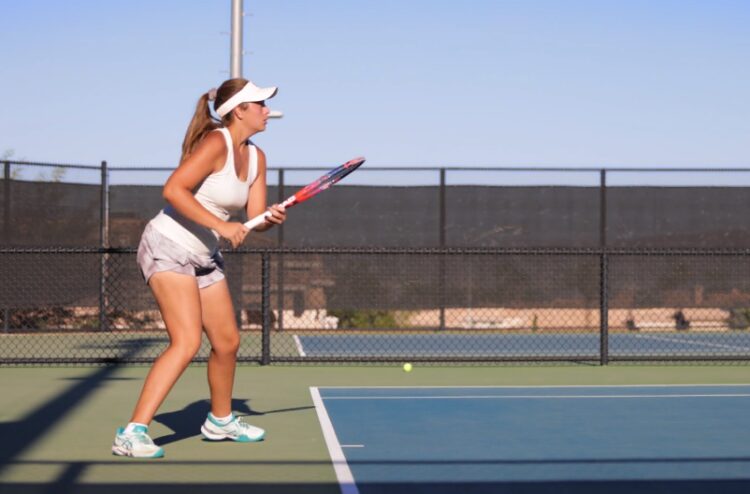
Footwork is the foundation upon which all tennis skills are built. Without proper movement, even the most technically sound strokes can falter. I emphasize drills that mimic match play footwork, such as side-to-side shuffles, quick forward sprints, and backpedaling. These exercises improve agility and ensure that players can get to the ball in the optimal position to hit an effective shot.
- Incorporate ladder drills to enhance agility and speed.
- Use cone drills to simulate match movement patterns.
Ladder Drills
- Start at the second corner of the tennis court, where the double and the bottom line intersect. Run from the baseline from one side to the other side.
- Once in the corner, switch to the net and continue to the double line and tap to the net.
- Return from the net to the service line behind you.
- Continue through the service line from the double line to the center line.
- Along the center line of the service box, keep shooting and then touch the net.
- Turn down the center line until you reach the service.
- Continue on the service line until you reach the double line.
- Shoot forward in a double line and then tap the net.
- The line moves down the line until it reaches your bottom. This is the angle you start from.
Cone Drills
- Place the tennis ball or cone or saucer at the bottom of the court and at the center.
- Place a ball or cone/saucer in front of the net on each double line and center of the service box.
- Finally, place a ball or cone/saucer in the service line in each field of the court.
- After placing the tennis ball or cone/saucers, stand in the middle of the field and jump into each other and collect them.
- Return to the field in the middle of the court and put it in a tennis basket or hopper.
- Continue these steps until the collection of all objects is in an incomplete position.
This is a great exercise to develop not only your sprint skills. But also requires you to throw forward when shooting. The really good part is the bone to the ball, so this will also help strengthen the legs. It’s a good idea to replace the legs you put on to train both legs.
FAQs:

Is there a way to play tennis by yourself?
Yes, you can play tennis by yourself by using a ball machine, hitting against a wall or backboard, or even practicing swings and footwork drills. These methods allow you to work on different aspects of your game, from stroke consistency to movement, without the need for a partner.
How can I improve my tennis on my own?
Improving your tennis on your own can be achieved through focused drills that target specific areas of your game. Use a ball machine to practice your strokes, hit against a wall to improve your timing and consistency, work on your footwork with agility drills, and strengthen your mental game by setting goals and visualizing match play. Regularly reviewing and adjusting your technique is also crucial.
How can I practice tennis indoors at home?
Indoor tennis practice can include shadow swings to work on your form, using a mini rebounder or foam ball against a wall for stroke practice, and doing footwork drills in a clear space. You can also focus on your physical conditioning with exercises like lunges, squats, and core workouts that are beneficial for tennis players.
What is the best way to practice tennis at home?
The best way to practice tennis at home is to create a routine that includes a mix of stroke practice, footwork drills, strength and conditioning exercises, and mental visualization techniques. If space allows, use a rebounder or wall to practice hitting, and consider using video resources for guided drills and technique tips.
How many hours a day should I practice tennis?
The amount of time you should practice tennis each day varies depending on your level, goals, and physical conditioning. For serious players, 2-4 hours of focused practice daily can be beneficial, while recreational players might aim for 30 minutes to 1 hour. It’s important to balance intense practice with adequate rest and recovery to prevent injury.
Conclusion
Improving your tennis game on your own is a journey of personal commitment and self-discipline. Remember, the quality of your practice is just as important as the quantity. Keep your goals clear, your motivation high, and enjoy every moment you spend honing your craft. After all, the game is not just about competition; it’s about the passion for improvement and the love for every shot you play.
Related:
- Top 19 Best Tennis Bags 2024 [Unbiased Reviews]
- 20 Best Tennis Shoes 2024 - Stylish and Athletic
- 18 Best Tennis Racquets 2024 - Exclusive Reviews &…
- 15 Best Tennis Balls 2024 - USTA and ITF Approved
- 15 Best Tennis Racquet for Beginners & Intermediate…
- 10 Best Tennis Ball Machine 2024 - Perfect for Solo Players

